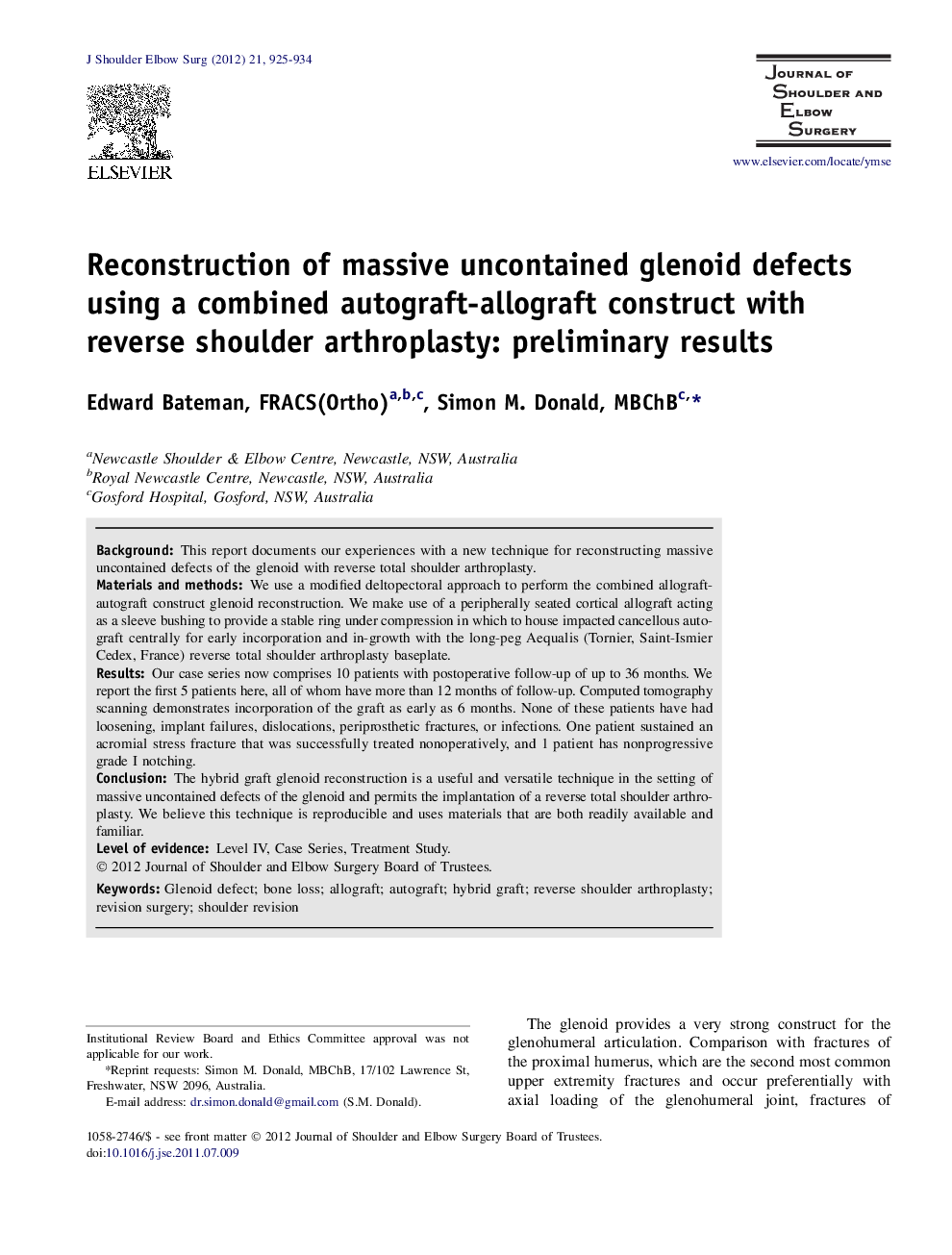| Article ID | Journal | Published Year | Pages | File Type |
|---|---|---|---|---|
| 4074299 | Journal of Shoulder and Elbow Surgery | 2012 | 10 Pages |
BackgroundThis report documents our experiences with a new technique for reconstructing massive uncontained defects of the glenoid with reverse total shoulder arthroplasty.Materials and methodsWe use a modified deltopectoral approach to perform the combined allograft-autograft construct glenoid reconstruction. We make use of a peripherally seated cortical allograft acting as a sleeve bushing to provide a stable ring under compression in which to house impacted cancellous autograft centrally for early incorporation and in-growth with the long-peg Aequalis (Tornier, Saint-Ismier Cedex, France) reverse total shoulder arthroplasty baseplate.ResultsOur case series now comprises 10 patients with postoperative follow-up of up to 36 months. We report the first 5 patients here, all of whom have more than 12 months of follow-up. Computed tomography scanning demonstrates incorporation of the graft as early as 6 months. None of these patients have had loosening, implant failures, dislocations, periprosthetic fractures, or infections. One patient sustained an acromial stress fracture that was successfully treated nonoperatively, and 1 patient has nonprogressive grade I notching.ConclusionThe hybrid graft glenoid reconstruction is a useful and versatile technique in the setting of massive uncontained defects of the glenoid and permits the implantation of a reverse total shoulder arthroplasty. We believe this technique is reproducible and uses materials that are both readily available and familiar.
